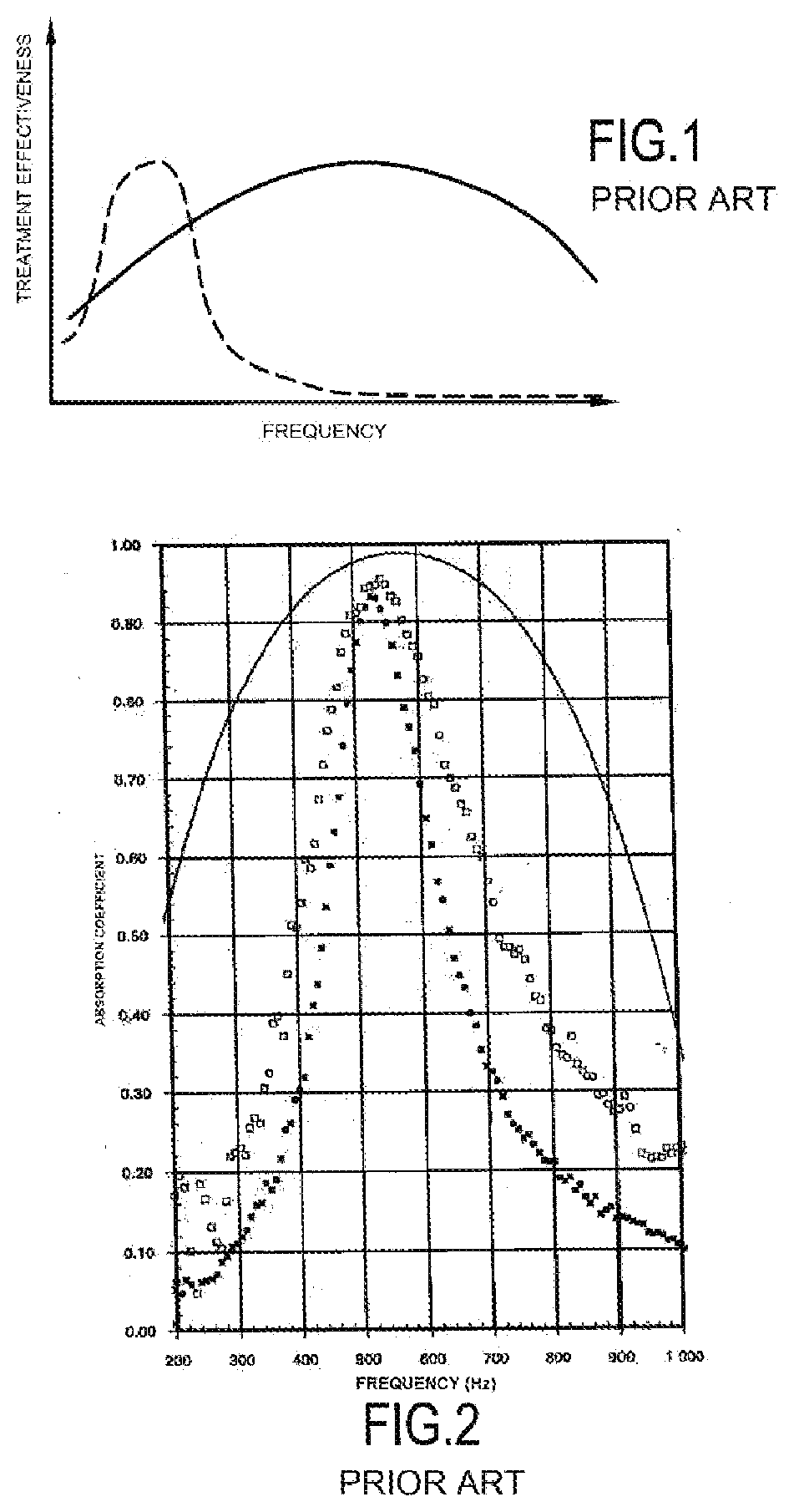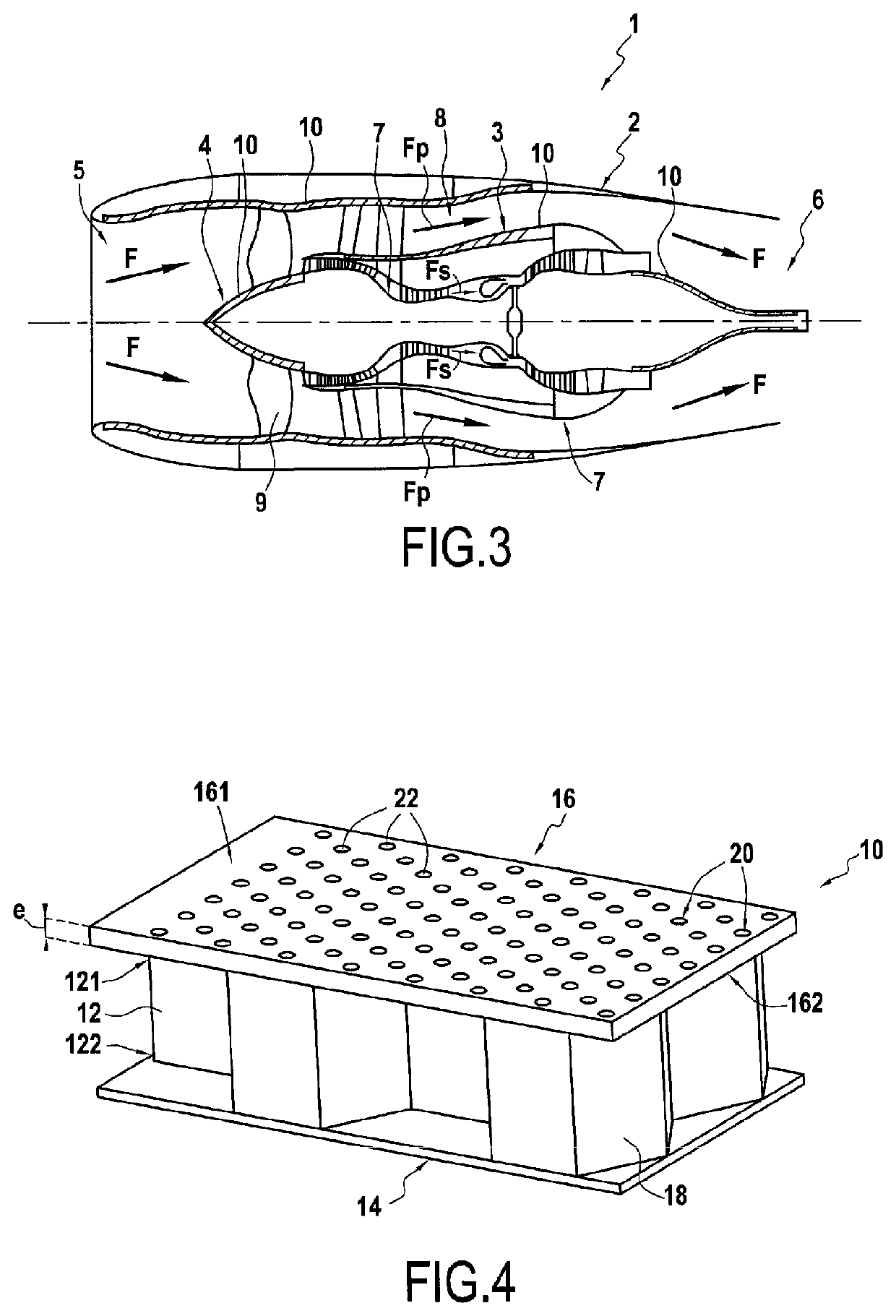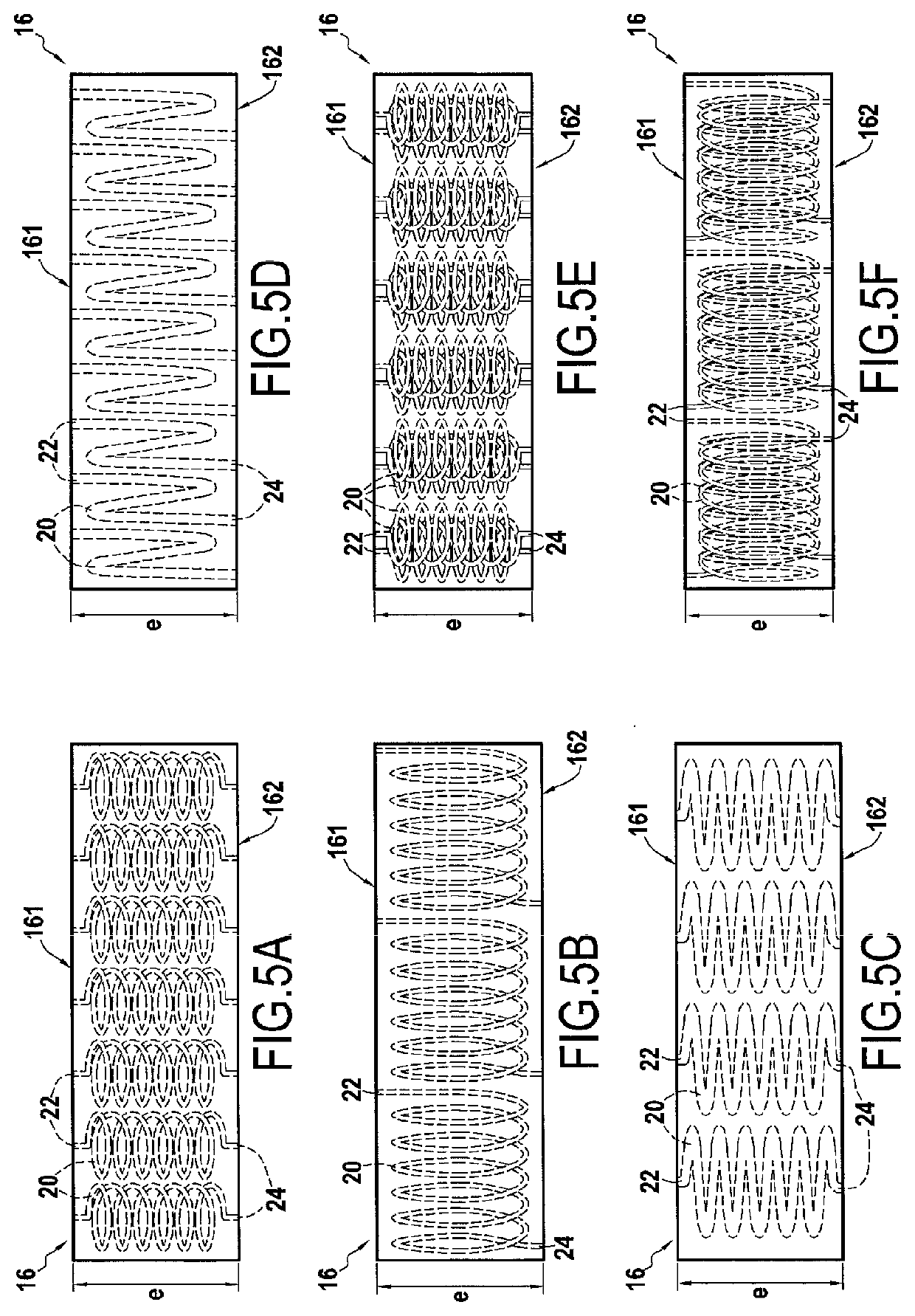Acoustic treatment panel for a turbojet engine
- Summary
- Abstract
- Description
- Claims
- Application Information
AI Technical Summary
Benefits of technology
Problems solved by technology
Method used
Image
Examples
Embodiment Construction
[0050]FIG. 3 represents a sectional view of a turbojet engine 1 according to one embodiment of the invention, in a longitudinal plane of the turbojet engine 1.
[0051]The turbojet engine 1 comprises a nacelle 2, an intermediate casing 3 and an internal casing 4. The nacelle 2 and the two casings 3 and 4 are coaxial. The nacelle 2 defines at a first end an inlet channel 5 for a fluid flow and at a second end, opposite the first end, an exhaust channel 6 for a fluid flow. The nacelle 2 and the intermediate casing 3 delimit therebetween a primary fluid flowpath 7. The intermediate card 3 and the internal casing 4 delimit therebetween a secondary fluid flowpath 8. The primary flowpath 7 and the secondary flowpath 8 are disposed along an axial direction of the turbojet engine between the inlet channel 5 and the exhaust channel 6.
[0052]The turbojet engine 1 further comprises a fan 9 configured to deliver an air stream F as a fluid flow, the air stream F being divided at the outlet of the fa...
PUM
 Login to View More
Login to View More Abstract
Description
Claims
Application Information
 Login to View More
Login to View More - R&D
- Intellectual Property
- Life Sciences
- Materials
- Tech Scout
- Unparalleled Data Quality
- Higher Quality Content
- 60% Fewer Hallucinations
Browse by: Latest US Patents, China's latest patents, Technical Efficacy Thesaurus, Application Domain, Technology Topic, Popular Technical Reports.
© 2025 PatSnap. All rights reserved.Legal|Privacy policy|Modern Slavery Act Transparency Statement|Sitemap|About US| Contact US: help@patsnap.com



